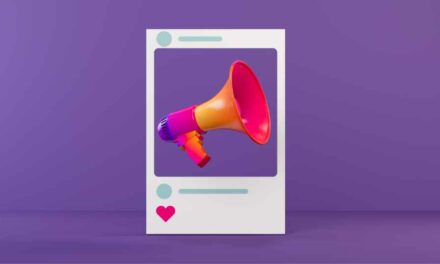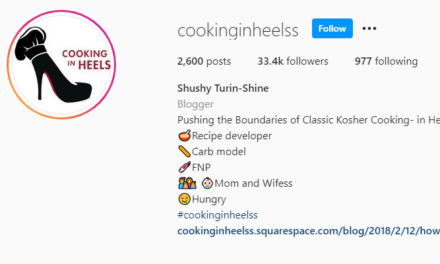In 11 months, The Tilt’s grown its subscribed audience by more than 65% – from 16K to 26.5K subscribers. Much of that growth has come through partnerships, trade cross-promotion, and similar tools.
As The Tilt’s director of growth and partnerships, I devote almost all of my full-time work to that mission. Here are some lessons and tips learned along the way to help you grow your newsletter audience (or any other content product with subscribers).
@TheTiltNews added over 10K subscribers in part through its free cross-promotion partnerships, says @MarcMaxhimer. #Newsletters #CreatorEconomy Share on XIdentify potential partners to grow your audience
Since we’re a newsletter for content creators, I first subscribed to other newsletters with potentially similar audiences. The ultimate end goal revolved around securing bartering deals – trading promotion spots to reach their subscribers and give them an opportunity to reach our subscribers.
I wanted to find audiences a little smaller than The Tilt’s who might find a cross-promotion deal more enticing. They would want their promotion to appear in a newsletter with a bigger audience. We would benefit by appearing more than once in their smaller newsletter, which nets better results. I also targeted similar size audiences for one-to-one deals.
Identify cross-promotion partners by finding similar content formats targeting similar audiences. They're more likely to want to do a trade deal, says @MarcMaxhimer. #ContentBusiness Share on XTo identify and learn about potential partners, I subscribed to over 150 newsletters and evaluated each over the first month. Some were clearly not a fit, so I unsubscribed, and others were a potential fit. I tracked all of this work on a master spreadsheet. Among the columns:
- Newsletter name
- Website address
- Frequency
- Audience size
- Author or creator name
- Contact information
- Areas covered/niche
- Notes
In the notes column, I tracked the dates of my outreach and their replies.
Outreach to potential cross-promotion partners
Once I identified newsletters with which we’d like to work, I sent cold emails. Similar to cold calling, I didn’t know the recipient, and I didn’t expect them to know about The Tilt.
After introducing myself, I wrote something I liked or learned about their newsletter. This personalization helps get your foot in the door because the creator or newsletter operator knows you have read their product and aren’t just cutting and pasting a templated message.
Personalize outreach emails to let the recipients know you understand their business and content, says @MarcMaxhimer of @TheTiltNews. #Sponsorships Share on XI shared background information about The Tilt newsletter, including publishing frequency, audience size, open rate, etc. Then I propose a customized deal. It usually involves trading advertising spots with the ratio dependent on the audience size.
Some replied immediately. If I don’t hear back, I follow up a week later. I’ve found most creators are super busy and often will follow up on email requests like mine on Fridays, Saturdays, and Sundays. About 50 to 60% of the time, the follow-up email elicits a response.
3 things that make a difference in outreach
Recipients of the proposed partnership emails seem to appreciate the personalized message about their product at the beginning of the email. They often reply with, “Thank you for your words” or “I’m so happy you like the newsletter.” Sometimes, they’ll ask for suggestions to improve or change their newsletter product. That engagement opens the door to a mutually beneficial relationship.
I also make sure the proposed deal is fair, if not skewed slightly in favor of the other newsletter. Since I am asking to reach the audience they worked hard to earn, I want to make sure the offer is worth their time and effort. Of course, I don’t want to give away The Tilt farm, either. It’s not a formula; it takes practice and research to get it all right for both parties.
In addition to one-by-one outreach, I get involved in newsletter communities where operators actively seek cross-promotions to grow subscribers. I’ve found Newsletter Blueprint (Discord community) and sites such as LetterGrowth.com to be helpful. They also are a great resource to get advice on the specific questions you have.
Execute the cross-promotion
When both parties say yes to the barter deal, we put the agreement details in an email. Even if I’ve discussed them on a call, I send a detailed outline of the agreement, including the deliverables for both parties. By putting it in writing, both parties can point out any needed changes before the partnership begins.
Among the elements included in the agreement:
- Spot of promotion (primary, secondary, classified) in The Tilt newsletter
- Copy requirements for the spot in The Tilt
Example: Primary spot, 75 to 100 words, CTA with link; logo (min. 300px wide) .png or .jpg
- Run dates in The Tilt newsletter
- Spot of promotion (primary, secondary, classified) in partner newsletter
- Copy requirements for spot in partner’s newsletter
- Run dates in partner’s newsletter
I also encourage partners to promote a free asset that the audience can sign up to download. We do that with The Tilt’s promotions, offering a free ebook or course.
We also created a landing page for the specific partnership’s CTA to see how well that promotion worked for us.
Challenges of barter deals
Sometimes partners agree to the cross-promotion, but they don’t send the promo content in a timely fashion. Make sure to give enough time between the publishing date (or newsletter creation date) and the partner’s due date. I now give a date at least a week before absolutely necessary to allow for the inevitable lateness.
Early on, I learned not to get into deals where the partner wants to match click for click. They often can backfire because one partner may offer a more enticing lead or have a bigger audience than the other.
I also avoid running cross-promotion contests in these partnerships. We have done “subscribe and win a gift card” with both partners putting up the money for the card and receiving all the entrants’ contact information. These usually lead to low-quality subscribers who unsubscribe when the contest is over or who are only interested in one partner’s newsletter.
Avoid generic cross-promotion contests. They boost your subscriber numbers, but many added to the list aren't your target audience, says @MarcMaxhimer. #ContentEntrepreneur Share on XHowever, we do run contests that would appeal to our target audience, such as free admission to Creator Economy Expo.
Reach out and grow your subscriber base
As you launch or update your partner outreach program, remember these three things:
- Be responsive and complimentary to prospective partners.
- Propose cross-promotion deals that are mutually beneficial, if not slightly skewed in favor of the prospect.
- Get it all in writing, from deliverables to placement and frequency, to ensure everybody is on the same page.
And don’t forget to create the spreadsheet to keep it all organized and allow you to spend your time finding and working with partners, not trying to figure out what you sent and when.
About the author
Marc Maxhimer is the Partnerships & Publishing Coordinator at Tilt Publishing. He holds a bachelor’s degree in English and mathematics education and a master’s degree in educational administration. He previously taught middle school for 16 years. Marc lives in (and loves all things) Cleveland with his wife, two daughters, and dog Wilson. He looks forward to helping any content entrepreneur publish their book.










